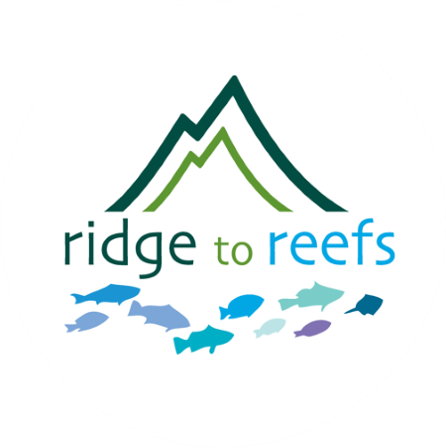Technical Implementation
Working with local pig farmers, we solved sustainability challenges to managing a dry litter piggery. The new system relies on abundant locally available materials: coconut husks, driftwood, and leaves.
The availability of wood chips continues to be problem plaguing piggeries in American Samoa. Piggeries are often not able to secure the wood chips necessary for a dry litter system. This is especially challenging in a village like Vatia, which is remote and requires travel over rough mountain roads.
Coconut husks are suitable for use in a dry litter system, even things like smells were greatly reduced. In addition, a common problem we have seen with other dry litter systems is leaking drinking water systems for pigs which make dry systems impossible or difficult to manage. Proper installation and maintenance of the drinking systems are critical to the effective management of dry litter piggery systems. When the husks are decomposed they can be placed around tree crops for weed suppression and fertilization.
Pre- Treatment
Effluent from piggeries and untreated septic systems pours into the waterways. This is a major threat to community health and clean water. Once the runoff reaches the coastal waters it impacts the health of the coral reef.
After One Month
One month after the project installation, growth of new vegetation in soil treated with biochar is taking hold. Vegetation limits the speed of flow and absorbs excess nutrients. The biochar in the soil safely lowers the harmful levels of nitrates and phosphorus in the runoff.
After Six Months
After six months of growth, this green infrastructure installation has grown to maximum efficiency, naturally treating runoff water on site. This protects the health of the community, local ecosystem, and nearshore coral reefs.
A portion of the piggery (left) and the flow of effluent toward a natural stream (right)
Preparation of biochar using a Samoan conservation burn (left) and biochar and coconut husks being added to cell one to add significant carbon sources to the biotreatment system (right)
Cells 1 – 3 under construction with cell one completed (left), project completion (right)
This is a local dry litter piggery within a covered greenhouse in AS that is using coconut husks as bedding (left); and using feeding nipples which are short and stout and relatively protected from the pigs placed between thick boards (right). This piggery is a zero discharge system.








